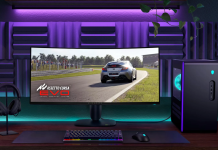
Our long wait for Motorola‘s first post-Google-acquisition smartphone is finally over. The Moto X was launched a couple of hours ago in New York. Let’s take a look.
The Moto X story began earlier this year as the rumoured “X-Phone”, a supposed “superphone” which could eclipse Google’s own Nexus line and it was said that new and advanced materials were being considered for the device’s construction and build. In fact, the Moto X may be the most-rumoured device of the year with an early Vietnamese leak (which also unknowingly showed us Motorola’s new logo), and despite a rumoured lack of Australian release we’ve been unable to ignore the device and still had to keep posting on it – and we even broke one of the rumours. Over the past couple of months, the “X Phone” has become the “Moto X”, and rumours and speculation have given way to reality.
It’s now August 2013, and the Moto X is Motorola’s new flagship phone. It’s going up against the Galaxy S4 and HTC One, and it’s taking a different approach.
The basic specs of the phone are straightforward:
- 4.7-inch 720p AMOLED scree – 316 ppi
- 1.7 Ghz Snapdragon S4 Pro (Krait) – dual core CPU
- Adreno 320 GPU – quad core GPU
- 2 GB RAM
- 16 GB storage (32 GB optional)
- 10 MP “Clear Pixel” rear camera, 2 MP front (both 1080p)
- Bluetooth 4.0, 802.11a/b/g/n/ac, GPS/GLONASS, NFC
- Miracast
- 2200 mAh battery
- Nano SIM
The CPU and GPU, along with a couple of other processors said to handle “natural language processing” and “contextual computing” form Motorola’s X8 Mobile Computing System, which (when you add it all up) it claims passes as an “8 core system”. We’ll reserve judgement on the maths and the marketing until we get a chance to play with it ourselves.

What the specs don’t tell you is actually how easy on the eye the Moto X actually is. We’ve seen the device’s shape and look leaked in a number of shots over the past few weeks, so the only real surprise here is how well it all sits together. The device bears more than a passing resemblance to a Nexus 4.
There’s very little bezel around the screen on the device’s sides, and a little more above and below the screen. It moves Android’s on-screen buttons ever closer to the bottom of the device, which is where you kind of feel they should have been all along. The small bezels contribute to making the device seem smaller than it actually is, similar to the way the Galaxy S4‘s 5-inch display fits a Galaxy S III-size body.
The most notable visual aspect of the device – customised backplates in a colour of your choosing – are available if you use Motorola’s Moto Maker website, but only for AT&T customers; everyone else gets a choice between black and white. You can also buy SOL Republic headphones in the same colour as your custom backplate.
Motorola’s sticking with AMOLED screens, which should play well with its “Active Notification” system that regularly lights up the screen to display notifications while locked – it only needs to light up the portion of the screen it’s displaying data on, so it shouldn’t tax the battery. They’re not necessarily defending their choice of a 720p display over 1080p, but explaining it’s better for battery life.
The 10 MP rear camera uses “Clear Pixel” technology, which Engadget says allows “75 percent more light for faster daytime exposure and low-light performance”. We’ve seen the discussions around light sensitivity played a number of times this year, most recently by HTC with the 4 MP “Ultra Pixel” camera in the HTC One. Early samples from the Moto X look promising, but we’ll have to wait and see how it performs in-hand.
You’ll find Android 4.2.2 is running the show, in seemingly Google’s best effort yet to show that they’re keeping Motorola at arm’s length. It’s close to “stock” Android, with the light touch we’ve seen from Motorola in last year’s RAZR HD and RAZR M devices also evident here. If you’re concerned about having the latest version of Android, The Verge reports that a Google Play Edition of the device is also on the cards.
Early suggestions that the Moto X would come in at a bargain price like the Nexus 4 sadly appear to be unfounded. The 16 GB version of the device is coming in at the typical US price of $199 on-contract, while the 32 GB version is a slightly cheaper-than-usual upgrade at $249 on-contract. Given these prices, it seems standard outright flagship pricing will likely apply.
Update: We’re hearing $630 is the off-contract US price. (Update 2: AT&T says $575)
Like everything else launched by Google recently, Motorola isn’t talking about international availability of the Moto X yet but Engadget says it’s expected to launch soon in a number of countries. Motorola did a reasonable job launching last year’s RAZR handsets here in a timely fashion, so we’ll be hoping to hear some local news soon.
We’ll be keeping our ears to the ground for local launch information. We’ve heard rumours that the Moto X has been spotted in a North Sydney venue, but you know how rumours are.
Got any information about local Moto X availability? Tip us!
Everything’s on the table now – are you interested in the Moto X? Why, or why not? Tell us in the comments!
Update (9.45am): We’ve received the following statement from Motorola Mobility Australia’s PR firm:
As our CEO Dennis Woodside said Moto X is just the first device in a new portfolio of products that show the best of Motorola as a Google company. We have exciting plans for all regions, although we can’t reveal specifics right now, this is just the start. We’ll be sure to update you as soon as we have more to share.
This, along with recent statements about the phone not heading to Europe or the UK seem to throw some cold water on the prospects of the device making it to Australian shores, although it also plays into some of the rumours we’ve heard in the last few months about there being more than one Moto X phone.
Our tipster earlier this year said Australian carriers had passed on the then-X-Phone – maybe there’ll be a different model that caters more to our local carriers. Make of this what you will!
Update (1.55pm): As time passes from this morning’s big reveal, it seems that the realisation that the Moto X isn’t leaving the US is starting to set in. The Ausdroid team has mixed feeling about this and will be articulating them properly later.
In the meantime, Ausdroid reader Shane has pointed out that Motorola’s Guy Kawasaki features in the TWiT Moto X reveal video, where he hints at future expansion into Latin America and Brazil but adds that Motorola’s focus is squarely on the US market at the moment.



